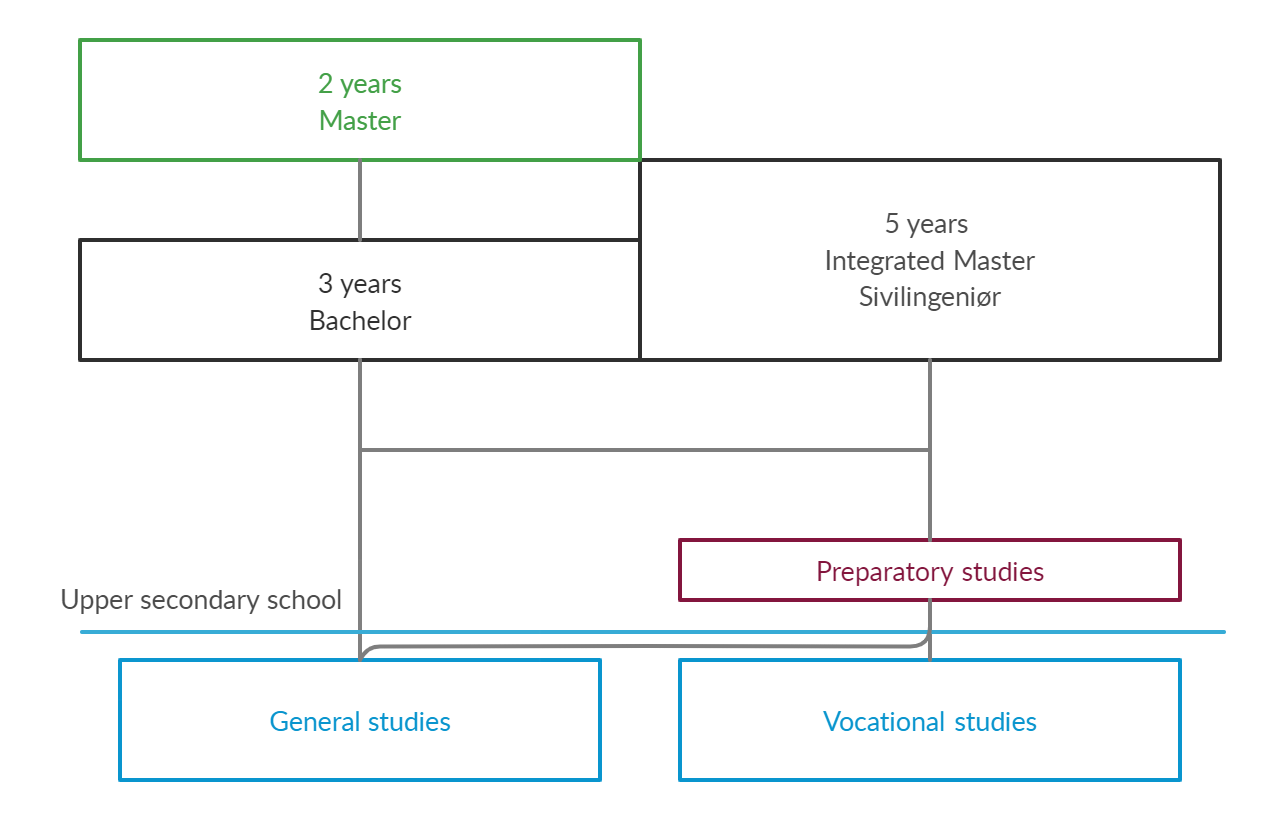NORWAY
Many universities offer 5-year engineering programs (bachelor and master) while others offer 2-year master programs. Finishing a 5-year engineering program awards the title Sivilingeniør, a legally protected professional title awarded by technical universities in Norway. At some universities and universities of applied sciences (högskule) students can complete a 3-year bachelor program (180 ECTS) that leads to professional qualifications. The bachelor programs are primarily taught in Norwegian and the master programs are taught in Norwegian or English. The universities that offer both bachelor and master engineering programs are:
Oslo Metropolitan University
Western Norway University of Applied Science
University of Stavanger
Norwegian University of Science and Technology (NTNU)
University of South-Eastern Norway
UIT the Arctic University of Norway
University of Agder
Some universities have campuses in multiple locations around Norway.

Application and preparation
Students apply online via the Norwegian Universities and Colleges Admission Service (NUCAS) to most bachelor programs. Some private universities may have their own admission system and entrance examinations. Applications for master programs are sent directly to universities. Higher education admission certification (matriculation exam) is the most common qualification for applying for university or college but engineering students must have certain levels in mathematics and physics. There are language requirements for Norwegian university applications. An English proficiency test is required, e.g. TOEFL, for programs in English. Requirements for applying are one of the following:
Matriculation exam with mathematics (R1 and R2) and physics I.
Technical vocational education including documented knowledge in mathematics and physics equivalent to mathematics (R1+R2) and physics I.
Exemptions may be made for students who
Do not have a matriculation exam but are at least 23 years of age in the year of admission and have at least 5 years of education or practice, and have completed and passed the six study skills subjects (Norwegian, English, history, social studies, mathematics, natural science)
Are at least 25 years old in the admission year and want to apply on the basis of real competence (professional practice, unpaid work, organizational work, education etc.). Universities assess whether applicants have the necessary prerequisites to be able to complete the study they are applying for.
Students who do not have the necessary levels in mathematics and physics can apply for three-semester schemes or 1-year prerequisite programs. The three-semester scheme is a bachelor program, 3 years in total. In the three-semester scheme, the first year consists of three semesters. Education starts in the middle of summer where intensive mathematics and physics courses are completed. In autumn, when the school year starts, TRESS runs alongside the engineering program the student also gained admission to. After the first year is completed, TRESS is completed and students have the prerequisite to finish the engineering program without additional courses.
Each program has a certain amount of study places available so meeting the requirements does not necessarily guarantee a study place. If there are more applicants than study places, students compete in two quotas. Half of the study places go to the first quota where students under 21 years, who finished their matriculation exam in normal time or finished their vocational education in normal time and have the additional subjects required, compete for places. In this quota students are ranked based on their school score, which is the point grade average from their upper secondary school education plus any additional language and science subjects. In the second quota, students are ranked based on their competition score, which is the school score plus additional points for age, higher education, folk high school or military service. 50 percent of study places go to the second quota and students that compete in the first quota also compete in the second quota.